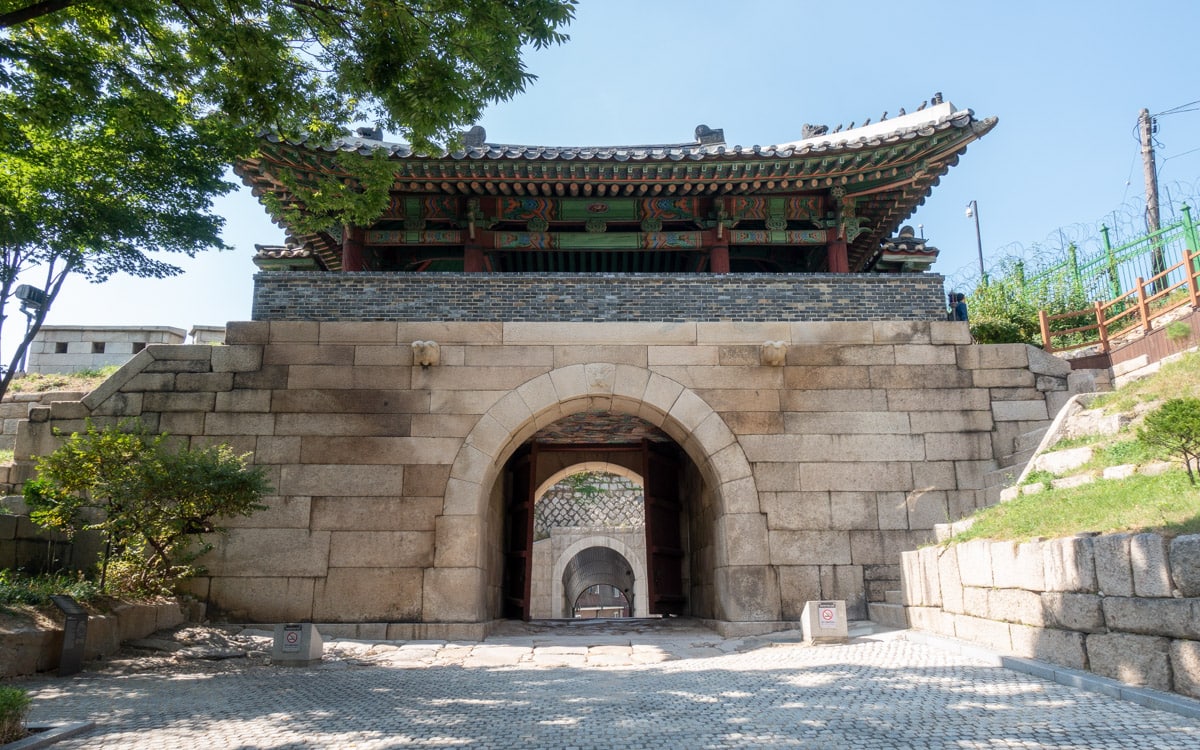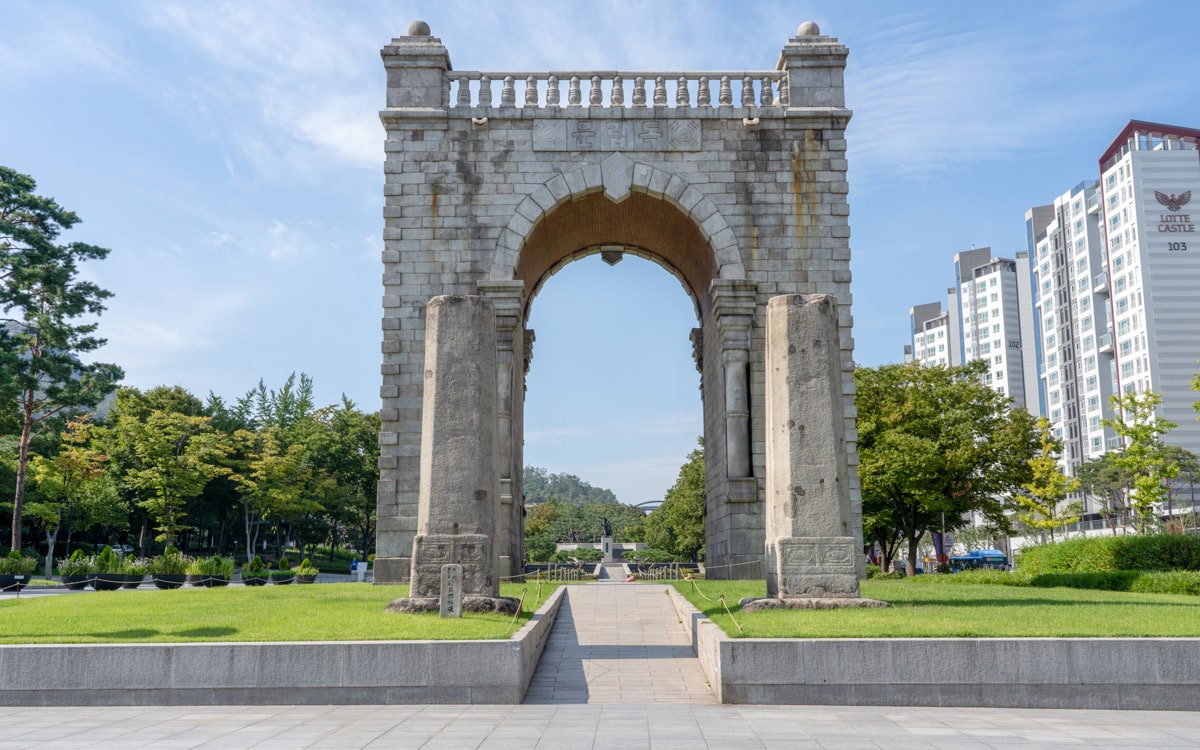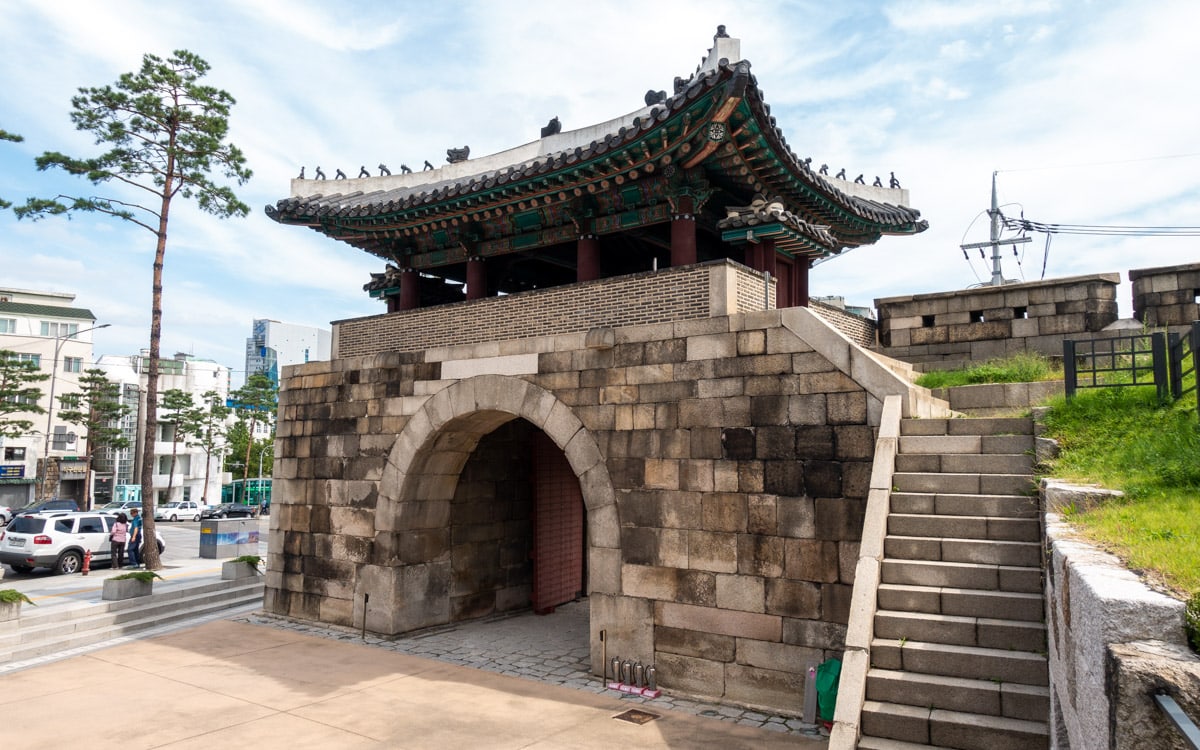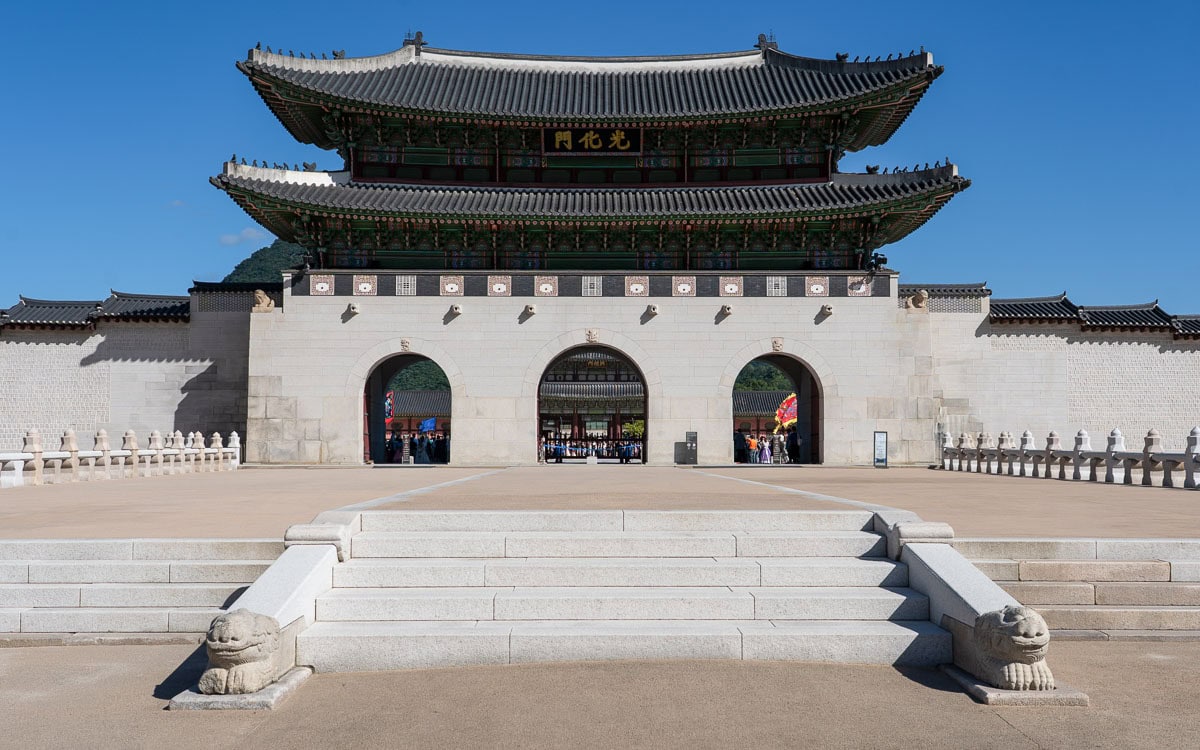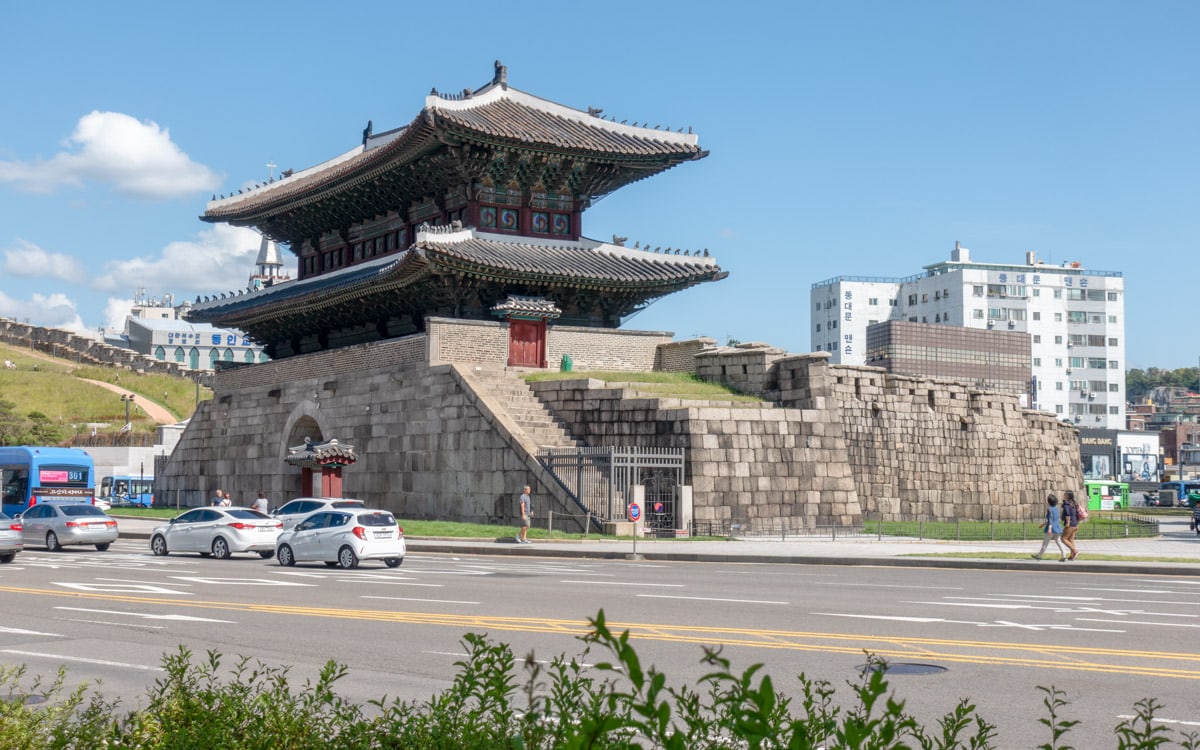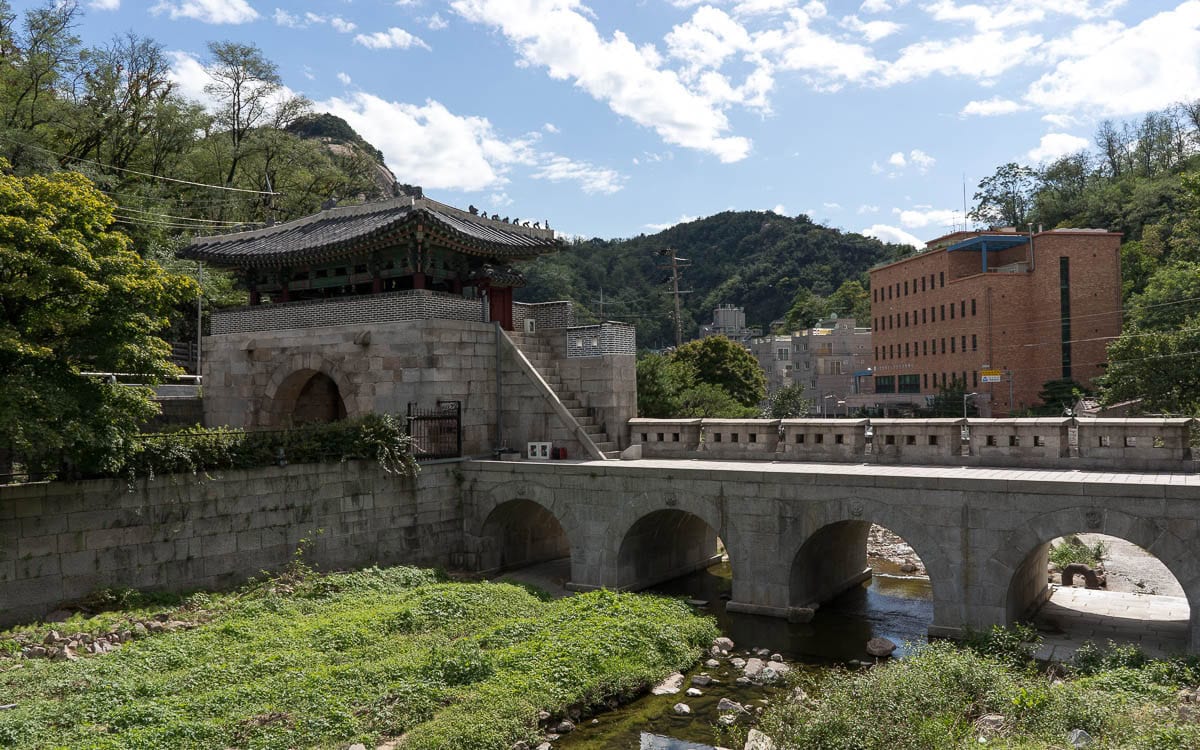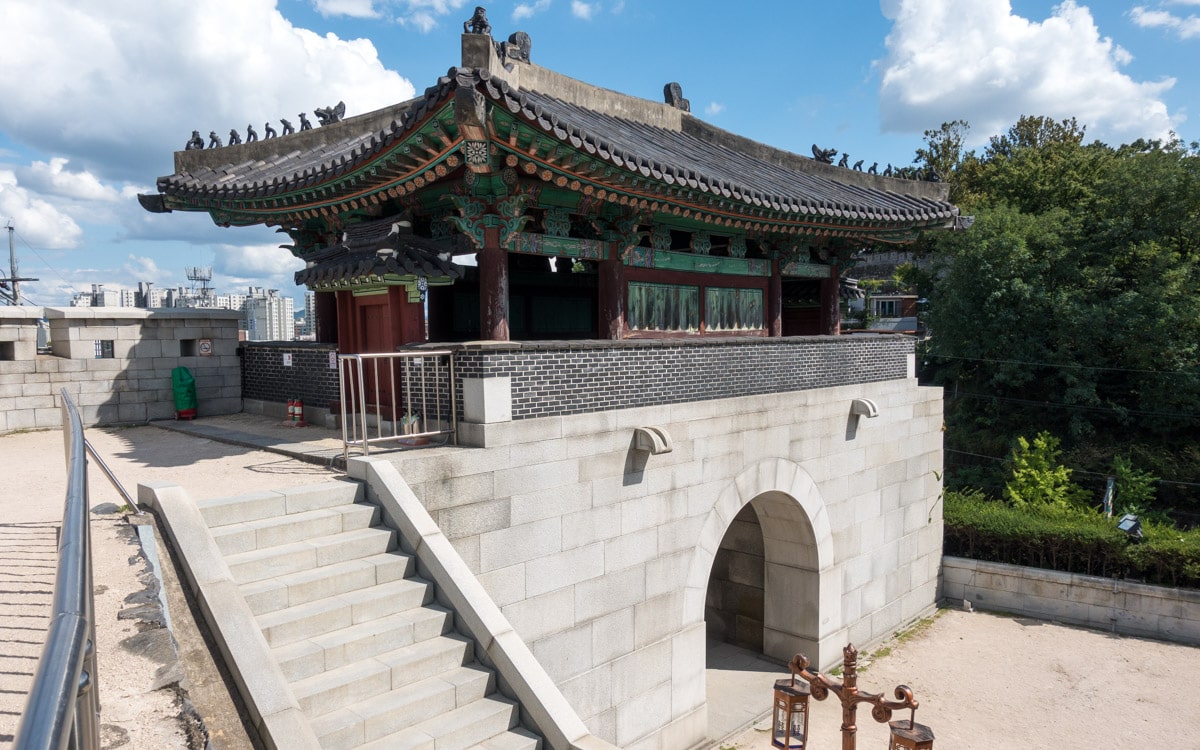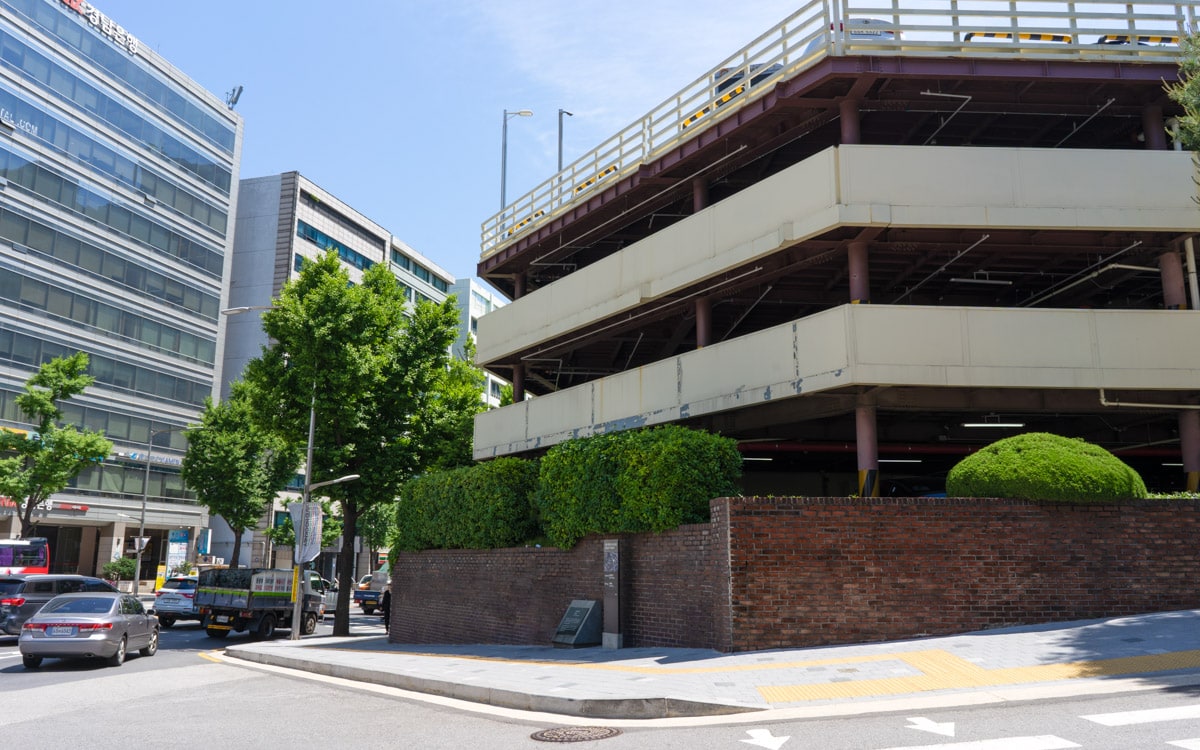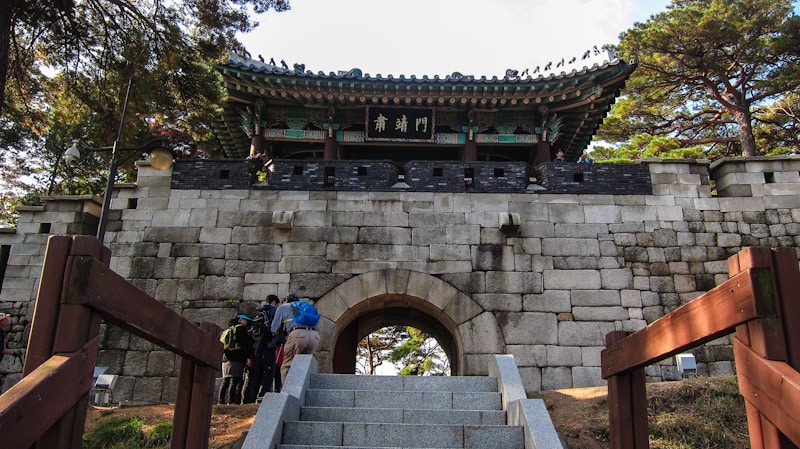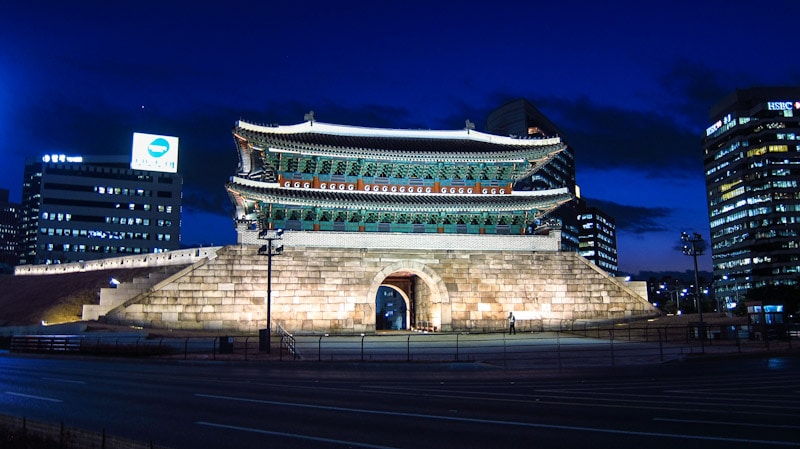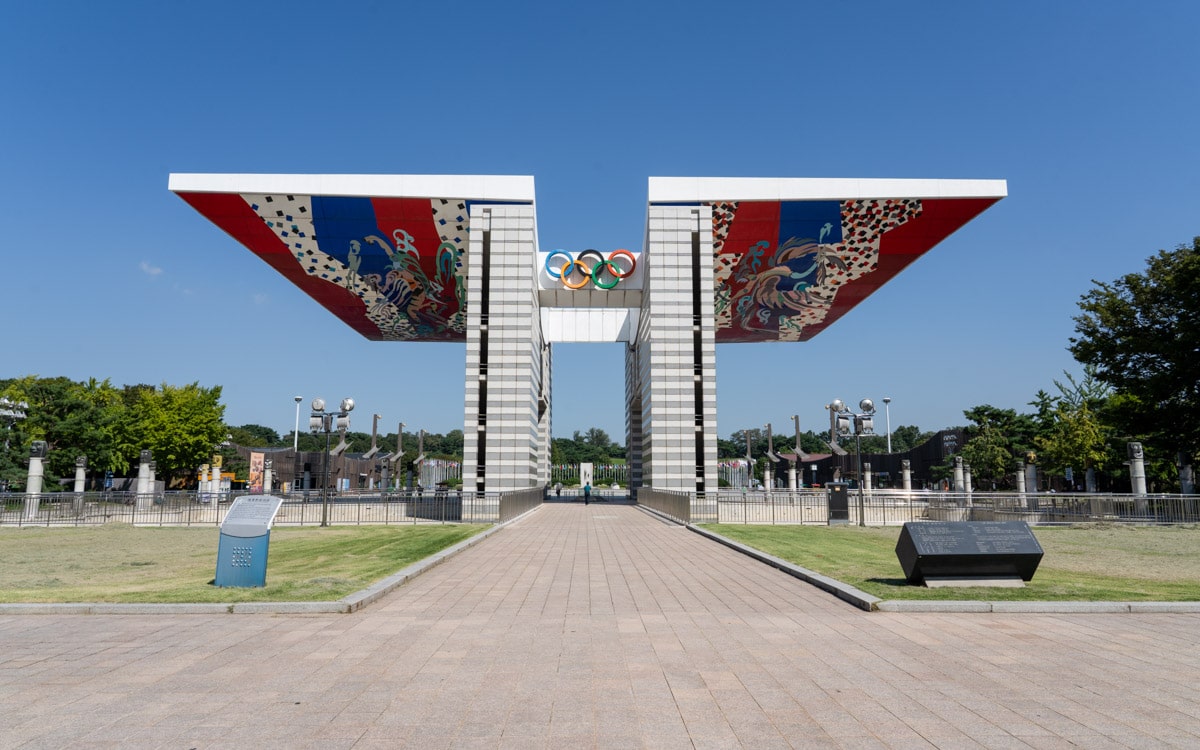Changuimun Gate (Jahamun Gate)
Changuimun Gate, located in northern Seoul, is one of the Four Small Gates of Seoul Fortress. In the past, the gate has also been known as Jahamun and Buksosomun. Construction started in 1396 during the beginning years of the Joseon Dynasty. Built north of the city, Changuimun became a major link between the city and areas to the north.
Read more about Changuimun Gate (Jahamun Gate)
Dongnimmun Gate (Independence Gate)
Dongnimmun Gate (Independence Gate) is a memorial built to honor the Korean people and their fight for national independence over foreign intervention. The gate is located in the southeastern corner of Seodaemun Independence Park near Seodaemun Prison History Hall. A gate known as Yeongeunmun once stood at this location. It was here where Chinese and other foreign envoys were received and greeted.
Read more about Dongnimmun Gate (Independence Gate)
Gwanghuimun Gate
Gwanghuimun Gate, literally meaning "Bright Light Gate," is one of eight gates found on the fortress wall that surrounds the city of Seoul. Gwanghuimun is one of four small gates located along the southeast area of the fortress wall. In 1396, a gate was built at this location, which was located in the southeastern corner of the walled city.
Read more about Gwanghuimun Gate
Gwanghwamun Gate
Gwanghwamun Gate is the imposing main gate of Gyeongbokgung Palace. The gate has been rebuilt many times over the years but remains an icon of Seoul. Construction began in 1395 at the beginning of the Joseon dynasty. The gate quickly became one of the most important gates of the Joseon Dynasty since it guarded the main palace.
Read more about Gwanghwamun Gate
Heunginjimun Gate (Dongdaemun Gate)
Heunginjimun Gate (Dongdaemun Gate), the historic Great East Gate on the Seoul Fortress Wall, dates back to the beginning of the Joseon Dynasty in 1398. Heunginjimun is now the oldest main gate remaining in Seoul after Sungnyemun Gate (Namdaemun Gate) was destroyed by a fire on February 10, 2008. The gate was originally built in 1396 during the reign 4th year of the reign of King Taejo.
Read more about Heunginjimun Gate (Dongdaemun Gate)
Hongjimun Gate and Tangchundaeseong Fortress
Hongjimun Gate is the main gate of Tangchundaeseong Fortress, built in 1719 during King Sukjong's reign. It served as a key defensive structure linking the Seoul City Wall (Hanyangdoseong) with Bukhansanseong, strengthening the capital's fortifications. Situated on the northern side of Hanseong, the name of Seoul during the Joseon Dynasty, Hongjimun was also called Hanbukmun.
Read more about Hongjimun Gate and Tangchundaeseong Fortress
Hyehwamun Gate (Honghwamun Gate)
Hyehwamun Gate (Honghwamun Gate) is one four small gates found on the Fortress Wall that surrounds the city of Seoul. Hyehwamun literally means "Distribution of Wisdom Gate." When originally built during the reign of King Taejo in 1396, it was known as Honghwamun. In 1511, it was renamed to Hyehwamun because of a naming conflict with a similarly named gate built in 1483 at Changgyeonggung Palace.
Read more about Hyehwamun Gate (Honghwamun Gate)
Souimun Gate
Located in central Seoul, not far from Seoul Station, Namdaemun Market, and Deoksugung Palace, is the former site of Souimun Gate. Souimun Gate was one of the Eight Gates of the Seoul City Wall. It was also one of the Four Small Gates along with Changuimun Gate, Hyehwamun Gate, and Gwanghuimun Gate.
Sukjeongmun Gate
Sukjeongmun Gate is the most northern of the Four Main Gates of Seoul Fortress. It is also known as Bukdaemun, literally meaning North Big Gate. When originally built in 1396, it was known as Sukcheongmun. In the 16th century, it was renamed to Sukjeongmun, which means Rule Solemnly Gate. Sukjeongmun was built north of Seoul behind Gyeongbokgung Palace.
Read more about Sukjeongmun Gate
Sungnyemun Gate (Namdaemun Gate)
Sungnyemun Gate (Namdaemun Gate), located in central Seoul, is an important and historic gate designated the first National Treasure of South Korea. Nearby Namdaemun Market gets its name from this gate. The name Namdaemun means Gate of Exalted Ceremonies. It was known as Namdaemun during the Japanese occupation of Korea in the 20th century, therefore it is known by two names.
Read more about Sungnyemun Gate (Namdaemun Gate)
World Peace Gate
World Peace Gate is a colorful gate located at Olympic Park. It was built as a sign of peace and harmony for the 1988 Seoul Summer Olympics which took place in September and October, 1988. Construction began on December 31, 1986 and was completed on August 31, 1988. It was designed by architect Kim Chung-up. The area of the site measures in at 80 meters (262 feet) by 420 meters (1,377 feet).
Read more about World Peace Gate
Last Updated on Feb 29, 2024
